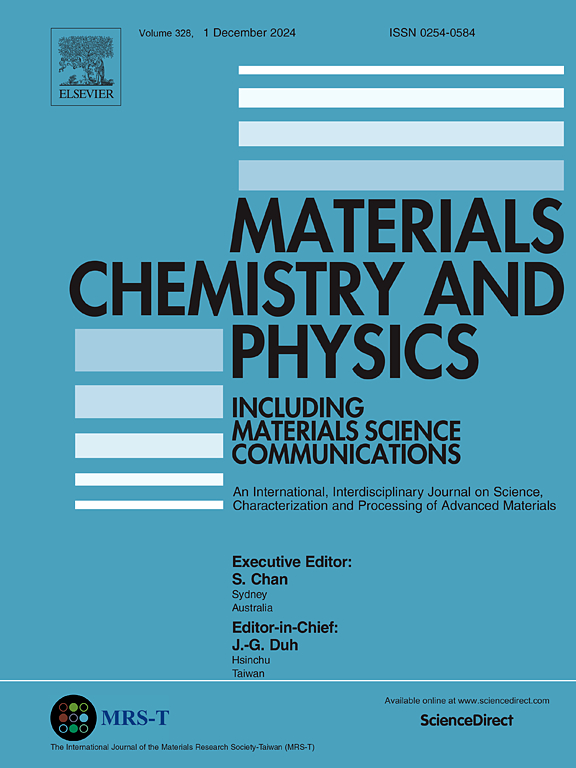Hydrothermal synthesis of environmentally-friendly hydroxyapatite using recycled waste for efficient Cd2+ removal from aqueous solutions
IF 4.3
3区 材料科学
Q2 MATERIALS SCIENCE, MULTIDISCIPLINARY
引用次数: 0
Abstract
This paper reports on the hydrothermal synthesis of environmentally–friendly hydroxyapatite (eco–HAp) using a cationic surfactant, cetyltrimethylammonium bromide, as a template agent with 1,3,5–trimethylbenzene as a pore expansion agent. Fourier transform infrared spectroscopy (FT–IR), nuclear magnetic resonance (NMR), and scanning electron microscopy (SEM) revealed that the resulting product consists of rod–like structures.
In batch measurements, an adsorbent dose of 15 g/L was sufficient to eradicate roughly 99 % of the Cd2+ in solution within 60 min, resulting in a maximum calculated adsorption capacity of 13.44 mg/g. Kinetics analysis revealed that the rate of adsorption was governed by pseudo–second–order kinetics (i.e., chemical adsorption), reaching equilibrium within 60 min. Thermodynamic analysis revealed that Cd2+ adsorption on the eco–HAp was a spontaneous, energetically–favorable, exothermic reaction. Overall, this study demonstrated the effectiveness of the prepared eco–HAp for the elimination of Cd2+ from aqueous solutions.

求助全文
约1分钟内获得全文
求助全文
来源期刊

Materials Chemistry and Physics
工程技术-材料科学:综合
CiteScore
8.70
自引率
4.30%
发文量
1515
审稿时长
69 days
期刊介绍:
Materials Chemistry and Physics is devoted to short communications, full-length research papers and feature articles on interrelationships among structure, properties, processing and performance of materials. The Editors welcome manuscripts on thin films, surface and interface science, materials degradation and reliability, metallurgy, semiconductors and optoelectronic materials, fine ceramics, magnetics, superconductors, specialty polymers, nano-materials and composite materials.
 求助内容:
求助内容: 应助结果提醒方式:
应助结果提醒方式:


